Yokokan Samurai Gardens and the Osensui-Yashiki Villa
Continually Ranked in the Annual Top Ten Japanese Gardens
Tokugawa Ieyasu had 19 wives and concubines, bearing 11 sons and 5 daughters. Yuki Hideyasu was Ieyasu’s second son, although born not to his wife at the time, Tsukiyama Dono, but through a dalliance with her servant, Oman! When Oman became pregnant, Ieyasu was afraid his wife would become very angry, and so he hid Oman away at the home of the trusted retainers, the Honda clan. Incidentally, it is believed that twins were born, a boy and a girl, both of whom Ieyasu kept a closely guarded secret. While little is known of the girl, the boy, Yuki Hideyasu grew to see action in a number of campaigns, and at the battle of Sekigahara in 1600, Yuki Hideyasu joined his father’s Eastern forces and distinguished himself in action yet again, receiving high praise from Ieyasu. After the battle, Ieyasu awarded him the late general Shibata Katsuie’s former lands, Echizen Province (Fukui Prefecture), and Kitanosho Castle where Shibata had committed seppuku while burning the castle keep down having been defeated by Toyotomi Hideyoshi in 1583. He was also awarded use of his father’s own traditional clan name, Matsudaira, becoming Matsudaira Hideyasu. Assisted by various daimyo, he commenced building what would become Fukui Castle, using stones from the walls and recycled timbers from Shibata Katsuie’s former Kitanosho Castle.
Luxurious Villa and Gardens
Just 400 meters north of this Fukui Castle, was a separate townhouse villa known as the Osensui-yashiki and built especially for the Lords of Fukui, the Matsudaira clan. This site was originally the home of Yuki Hideyasu’s elder statesman, one Nagami Uemon. When Hideyasu died of illness, Uemon, wishing to serve his lord in the afterlife, followed him in death by committing junshi, a form of ritual suicide. Yuki Hideyasu’s son, Matsudaira Tadanao, and Nagami Uemon’s son, also named Uemon, replaced them. It was then that an incident happened between the two families.
Yuki Hideyasu’s trusted retainer’s wife, and the younger Uemon’s mother, was a famed beauty, and the enamored Lord Matsudaira Tadanao ordered her to meet him one evening. However, the widow in declining his offer, cut off her hair, becoming a nun. In anger for the rebuttal, Tadanao set fire to his servants’ house, killing Uemon and his mother amongst others in the process. It is unclear how soon after the incident took place, but the Matsudaira clan then built the Osensui-yashiki, or the Springwater Mansion on the site.
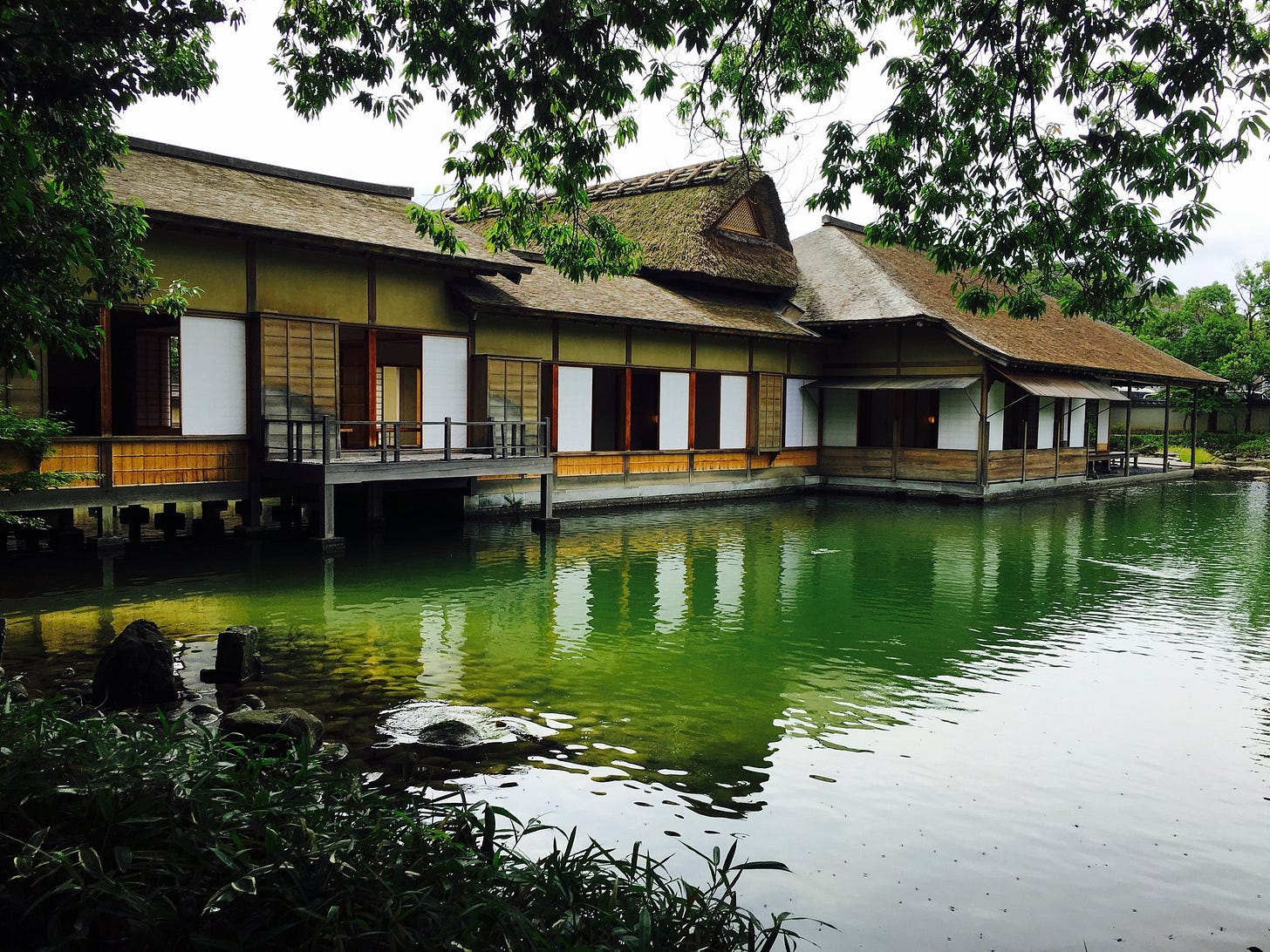
The oldest documents mentioning the Osensui Yashiki date from 1656. The structure comprises of six rooms including the Gozanoma, the lord’s audience chambers, the Otsukiminoma, the Moon viewing room, a kitchen, and bathroom facilities. The rooms are based on the particular samurai style of architecture known as shoin-zukuri, used in the residences of the samurai, temple guest halls, and Zen abbots’ quarters from the Muromachi period (1336-1573) onwards. Shoin-zukuri is characterized by the the traditional tokonoma alcoves, one for the display of hanging scrolls and another with decorative split-level shelving, and a low window side reading and writing desk known as a tsuke-shoin, from which the architectural style gets its name.The entire structure is constructed around the large, serene pond and the landscaped strolling garden and is widely known as one of the classic gardens of the mid-Edo period.
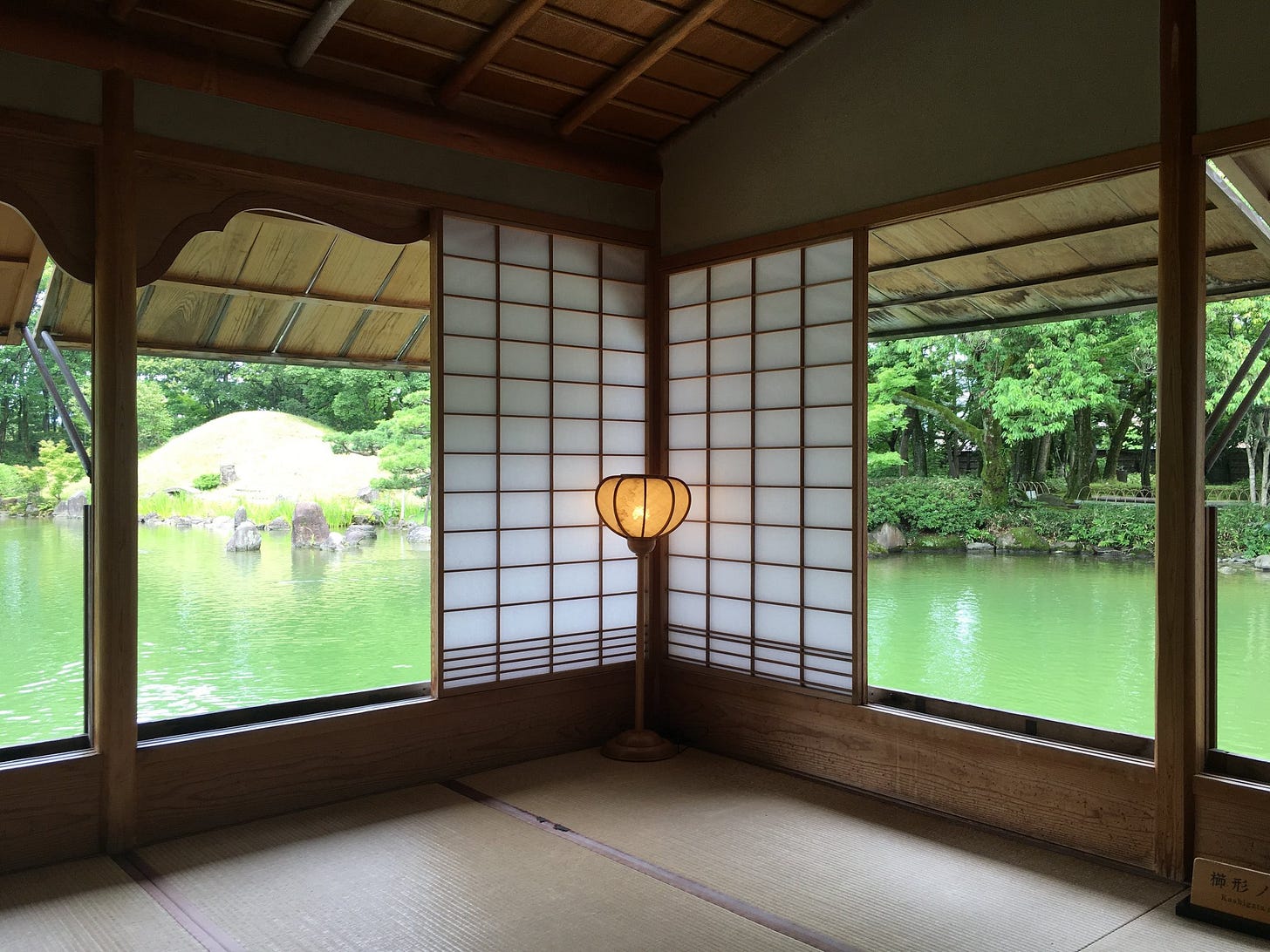
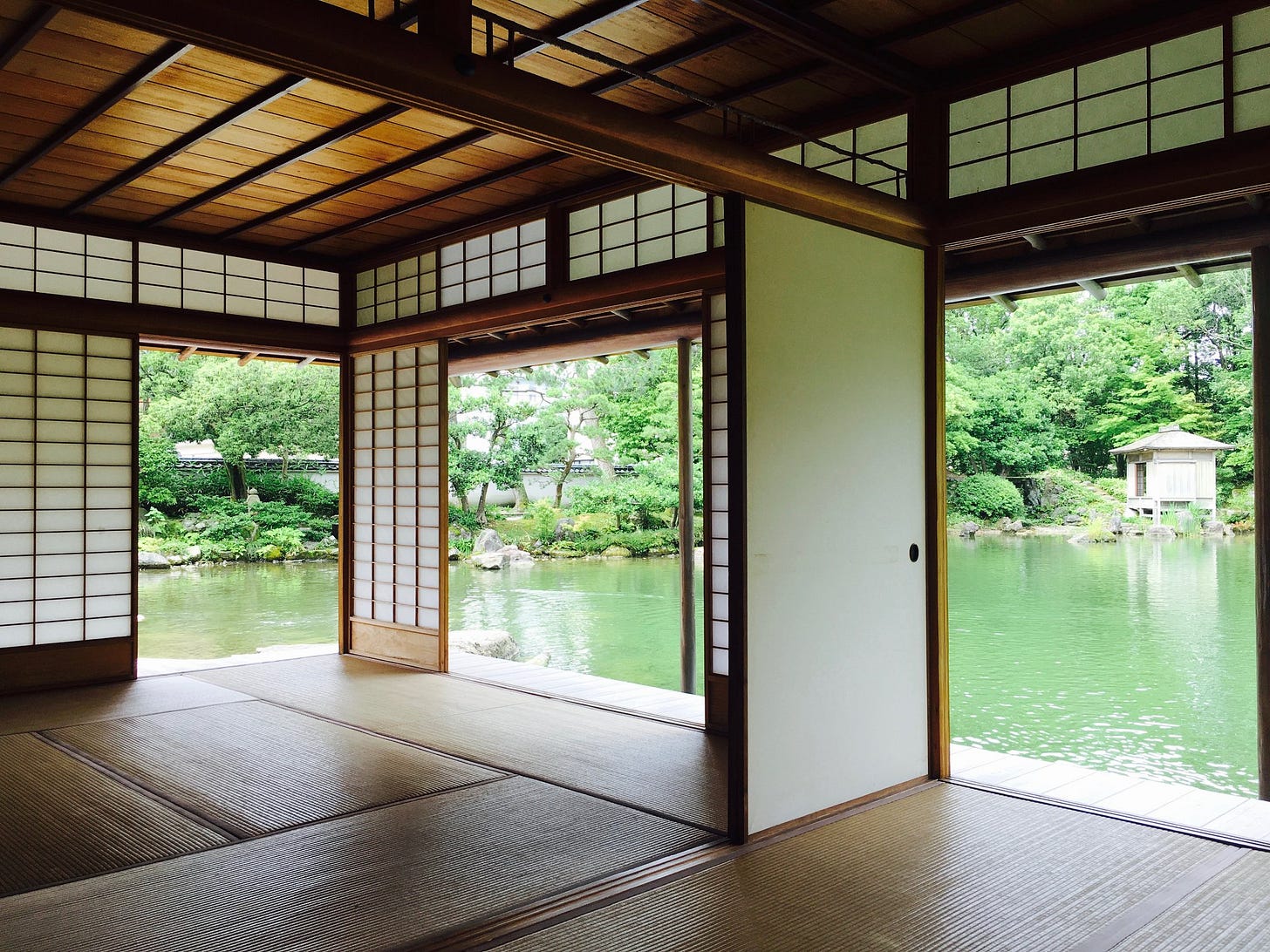
Attention to detail and sensory delights in the smallest of places is one of the most unique and charming aspects of Japanese gardens, and the samurai gardens of the Yokokan do not disappoint. The sukiya-style building is surrounded by the Kaiyu-shiki- teien rinsen garden, a circuit style garden featuring paths around the grounds designed to be walked through or around, rather than one intended for seated contemplation. Each position around the garden provides a differing view from the last.
The properties’ traditional ochaya, or tea house, is a fine example of Sukiya-zukuri architecture, a style developed during the Azuchi-Momoyama Period (1573-1600) when the tea ceremony was refined and is characterized by the simplicity and austerity of natural materials.
The property was used for staging tea ceremonies, as a rest home for the lord of Fukui, and as a residence. During the late Edo period, it was also the site of a factory producing European styled matchlock guns. The villa was retained by the ruling Tokugawa clan after the Meiji restoration and used as a guesthouse. In 1884, the 16th Lord of Fukui, Matsudaira Shungaku renamed the Osensui-yashiki the Yokokan. Unfortunately, theclassic mansion was destroyed by fire during World War Two air raid bombings.
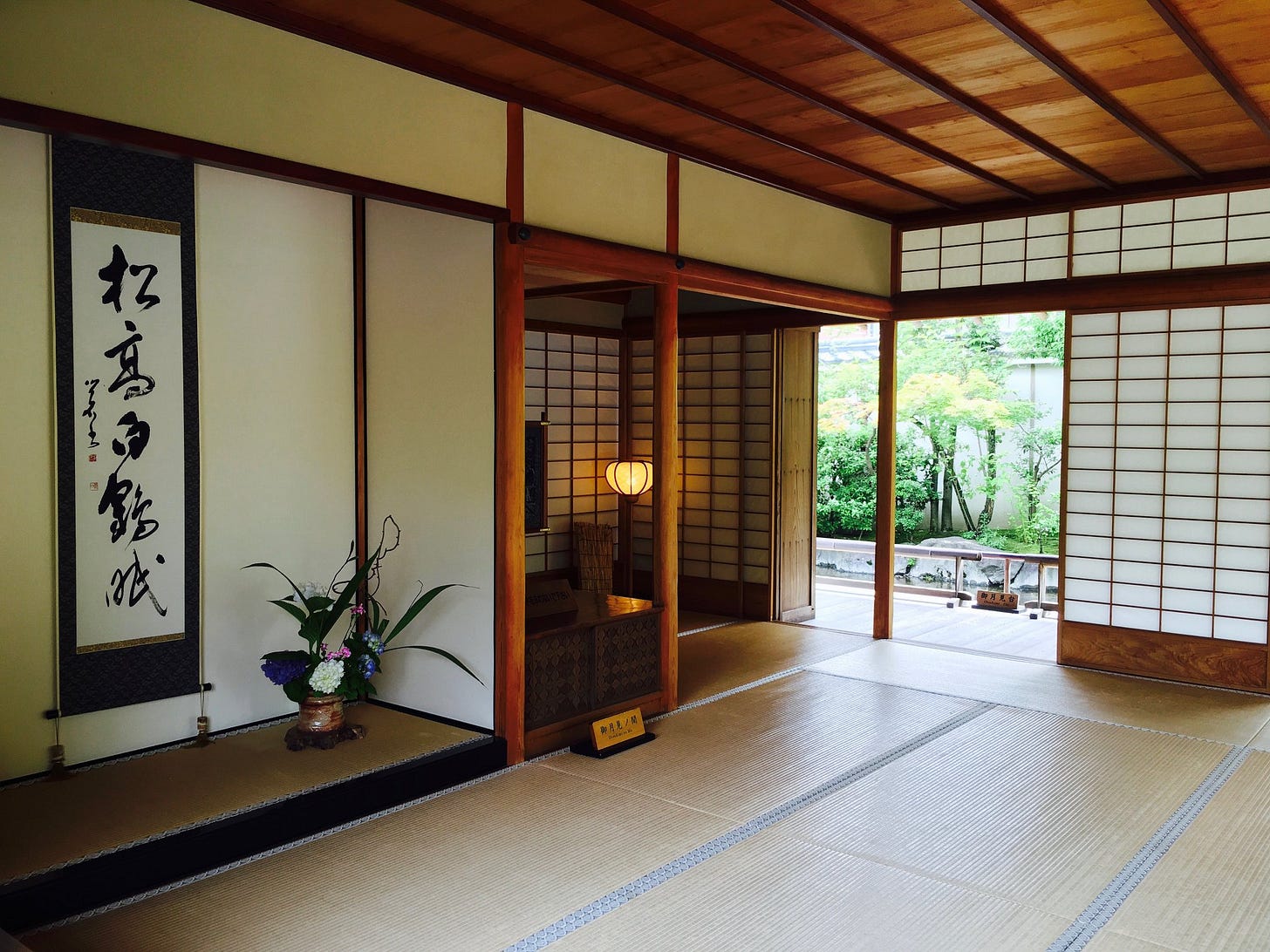
After much research, restoration of the mansion began in 1982 based on architectural drawings dated 1823, and was completed in 1993. The restored Fukui Matsudaira Villa and surrounding gardens are now known as the Yokokan Garden. A pond surrounds the stately home giving it the appearance of floating.
The beauty of the Yokokan is highly regarded worldwide, and has been continually ranked in the annual Top Ten Japanese Gardens by the American based magazine, Journal of Japanese Gardening. It features Japan’s largest stone bridge, formed using natural stones, and rocks shaped like animals at rest around the grounds. The elegant mansion offers fine views of the surrounding garden, and remains one of the finest examples of a samurai residence and garden.





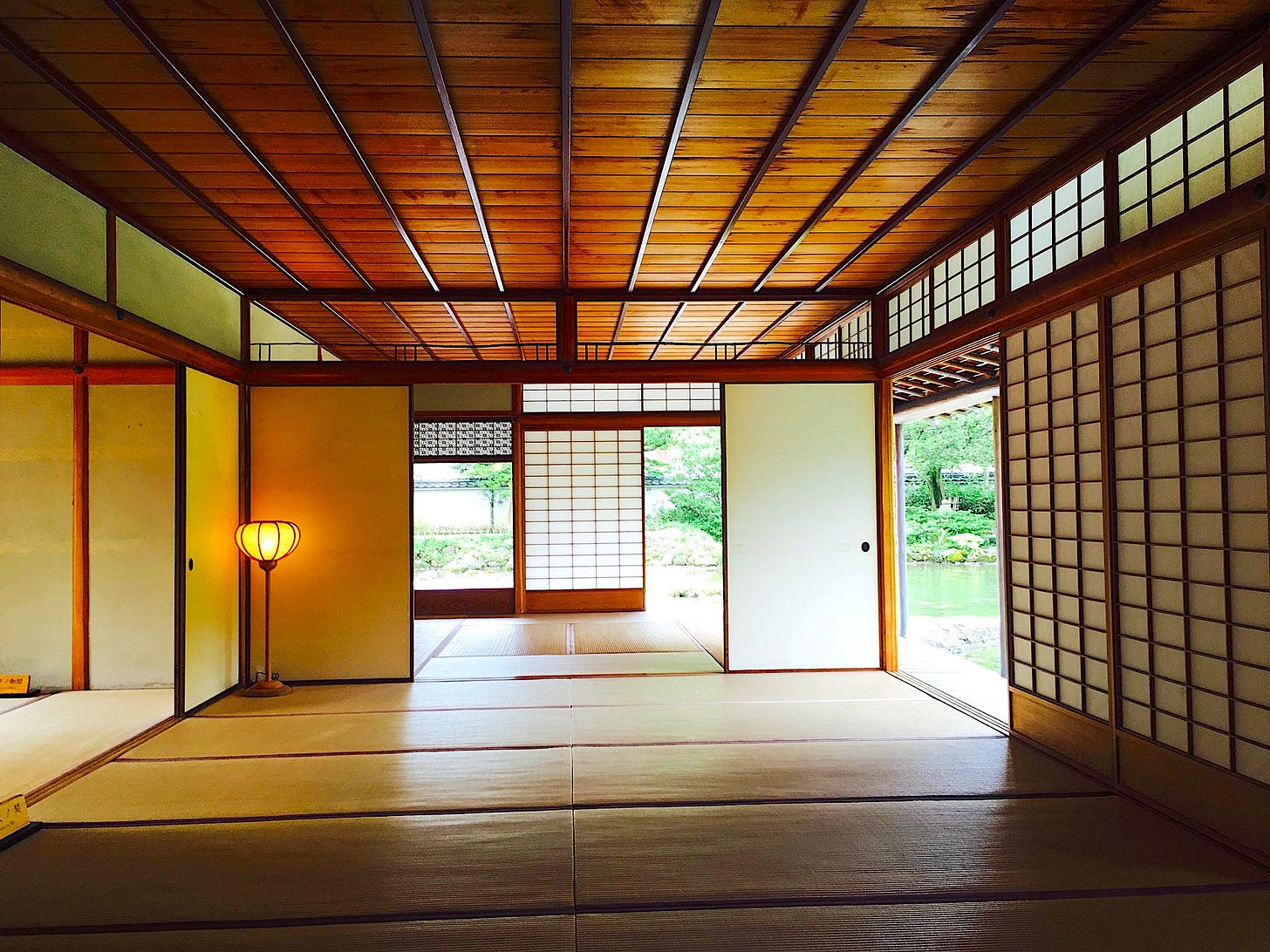
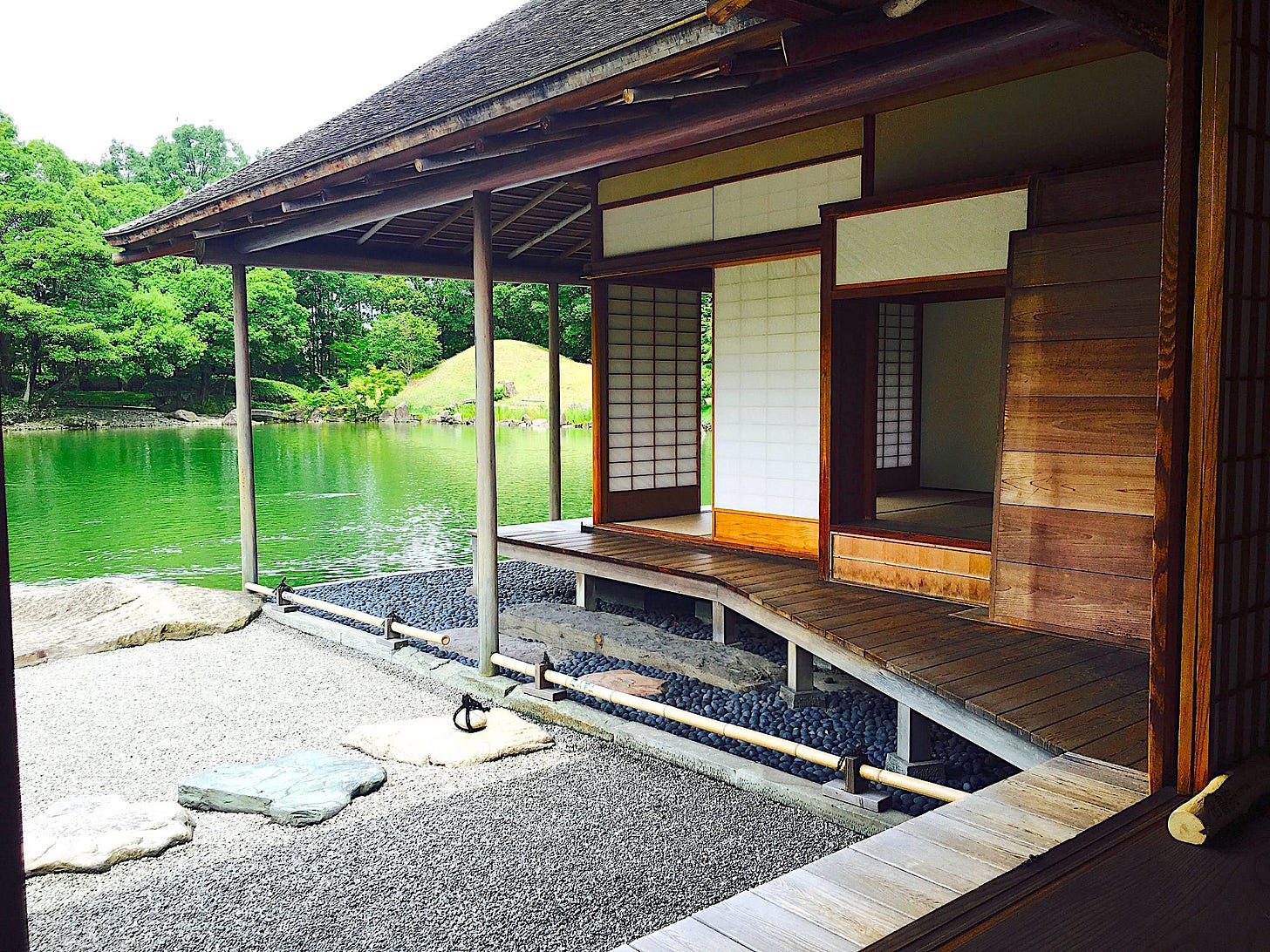
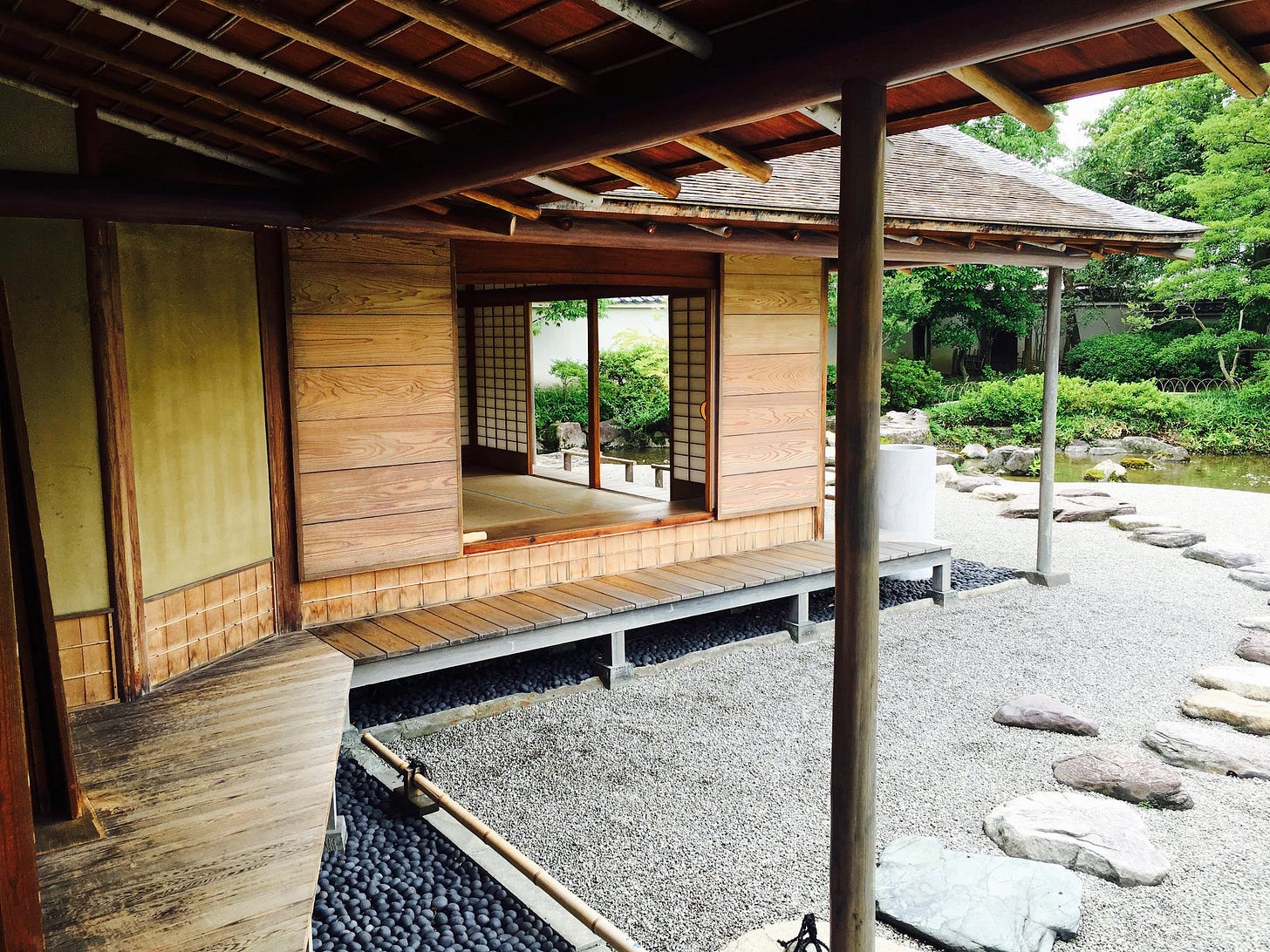
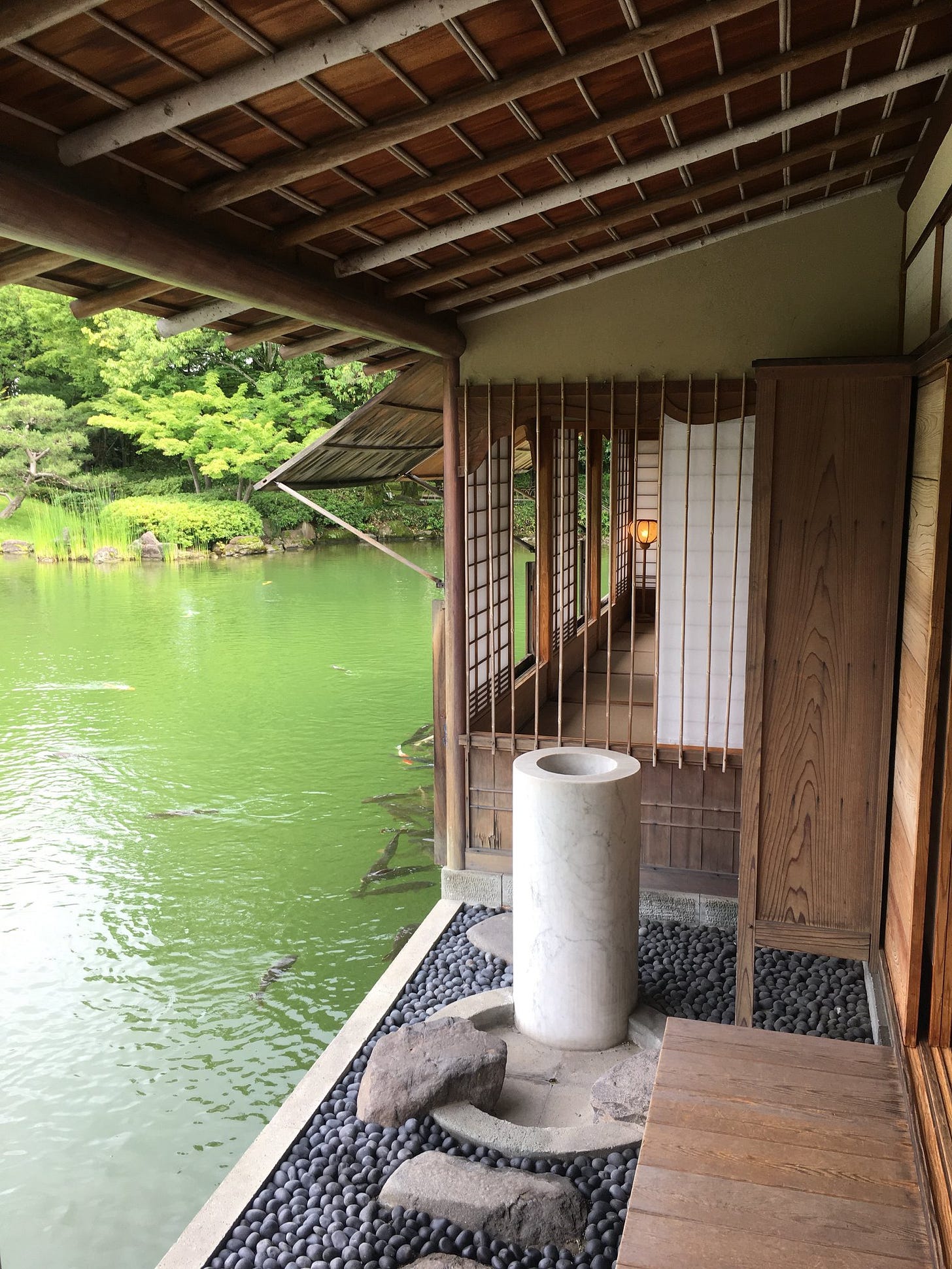
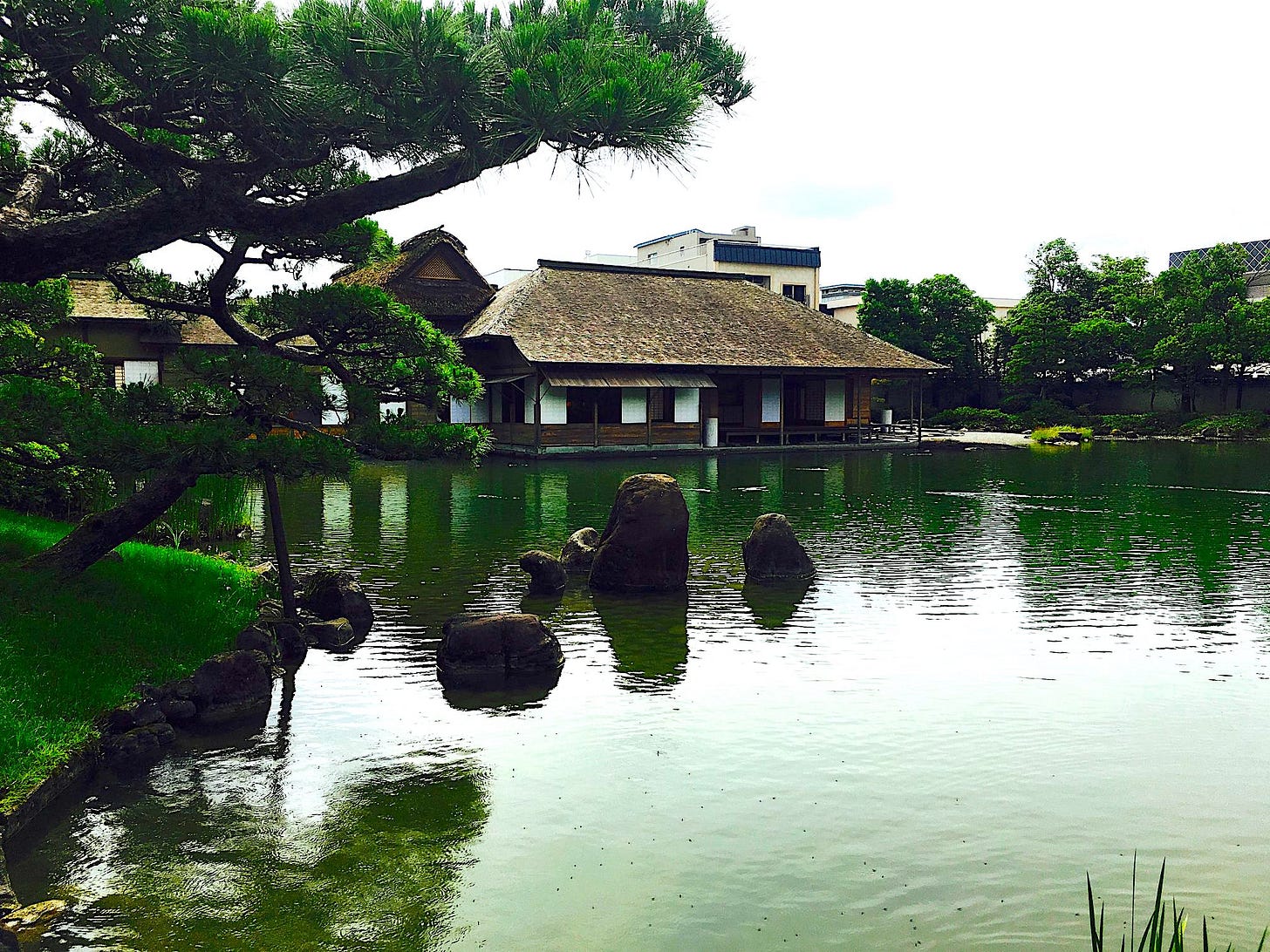
I visited the site during my journey in May. I highly recommend this site for its beauty and serene garden.
It looks absolutely gorgeous (but what an awful story, Tadanao sounds like a psychopath)!